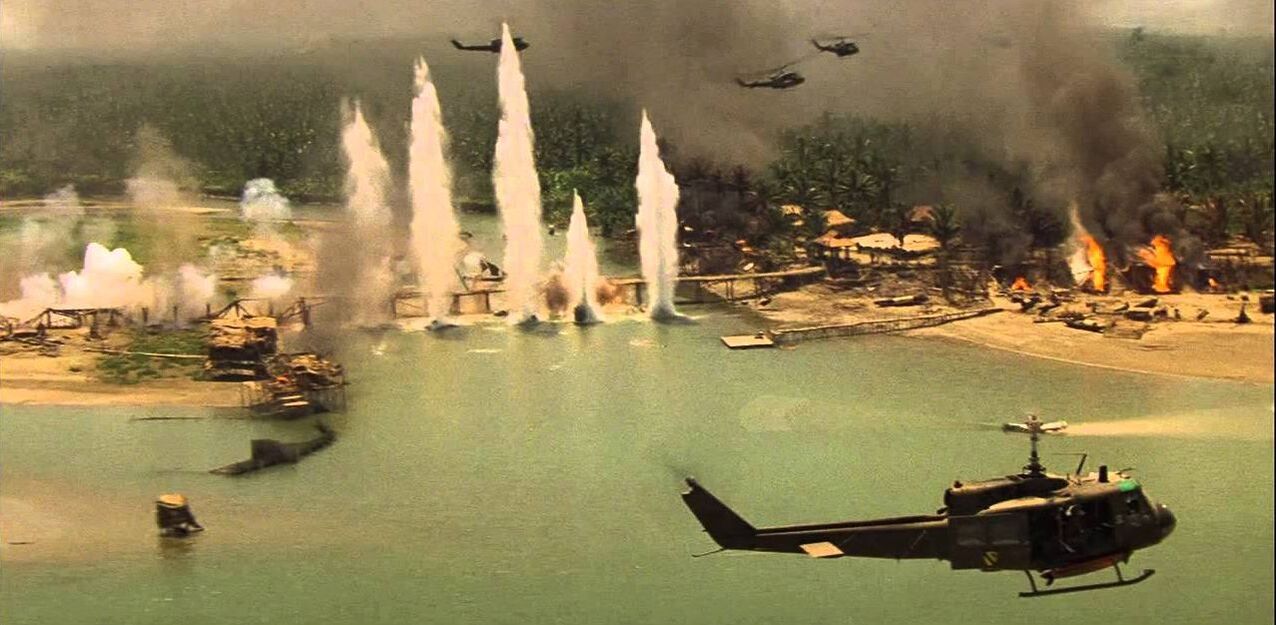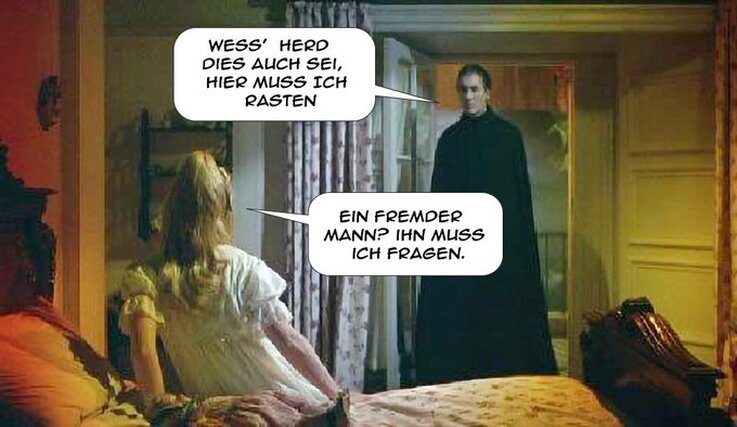Toying around with image and sound. Combining the music of Richard Wagner with film footage. There is few music as rich in imagination as the music of Richard Wagner. Music that, also outside the biotope of the operas for which it was written, loses nothing of its expressiveness and illustrative power. Wagner's music is a triumph of sensual subjectivity, a dizzying descent into the listener's psyche that is like a flight to the tops of imagination. Wagner had outspoken ideas about theatre and about the purifying qualities of the music dramas he had in mind. His work (both operas & writings) expresses a visionary power in which he looks far beyond the boundaries of what opera was up to in the mid-19th century. His foresight extended beyond the world of opera and beyond what he himself could suspect, for he could not foresee the medium that would see its introduction at the beginning of the 20th century: the movie. The art of movie making would be heavily indebted to the wizard of Bayreuth and would provide the question "which images to add to that illustrative, powerful music of Wagner" with many additional answers. Soon during the development of film as a popular art form, filmmakers discovered the power of music combined with moving pictures (moving pictures that were - at that time - shot without sound). Among those filmmakers there were few that had not been touched by the magic wand of the wizard of Bayreuth and at the beginning of the 20th century Richard Wagner's music found its way to the cinema. Notorious is the use of the Walkürenritt in D.W. Griffith's Birth of a Nation in a scene of a (victorious) Ku Klux Klan parade. The Walkürenritt as an expression of battle and triumph that sends its audience a morally murky message - it wouldn't be the last time in the 20th century. But as a music that gives adrenaline to images it is almost unsurpassed. Francis Ford Coppola knew how to exploit that in Apocalypse Now. In this movie American soldiers crank the Ride of the Valkyries out of the speakers when they bomb a Vietnamese village. Soundtrack to a massacre. Rarely did the Walkürenritt had a more grim staging. The bombardement is from an artistic point of view one of the marvels of cinema. It's high paced action in perfect rhythm (and no CGI to disturb the illussion, this is "real"). A sequence of scenes in which feelings clash into feelings because you want to go - regardless of morals - with the action and the music plays no minor role in that. With the help of the Wagnerian soundtrack, the horror of the bombardment becomes, above all, entertainment. (It is not uncommon for music to play a decisive role in the process of turning violence into enjoyment. With a "here comes the cavalry"-vibe one forgets the carnage, the suffering as a result from violence all too easy.) Wagner and war, it's connected like Wagner and death. Siegfrieds Trauermars in John Boorman's Excalibur is another fine example of Wagner's music as a movie soundtrack. But the most successful example of the use of Wagner's music in a movie is - as far as I know - in the movie Birth by Jonathan Glazer in which the face of Nicole Kidman becomes - on the sound of the Walküre overture - a movie in a movie (see also this article). For Wagner's music, the movies seem to be a natural habitat and the Wagnerian who always enjoys hearing the music of the master outside the biotope of their original operas can, in the current information age (with easily accessible tools) imagine himself - if only for a short moment - a creator as he (or she) combines existing film and music into something (not entirely) new . Here are five home-made videoclips in which Wagner’s music is combined with film footage. Please enjoy these little pieces of modern Gesamtkunstwerken.  The first clip is a fragment from the 1981 film Heavy Metal. An animated sci-fi fantasy film, based on a series of stories that were strongly inspired by the comics that appeared in the magazine "Heavy Metal" (in French "Metal Hurlant"). Stories about the struggle of good vs. evil with the necessary graphic violence and functional nudity. In this clip we see Taarna the Tarakian, a maiden warrior (who takes possession of a sword in a very Wagnerian way) taking a ride on the back of a pterodactyl while looking for some high-quality payback time. It is perhaps a bit obvious to add the Walkürenritt to this clip but here goes ... video: Heavy Metal (1981) music: Walkürenritt, Die Walküre (Bayreuth, Boulez, 1976) The second clip comes from the Hammer House of Horror. Toying with image and sound one finds out what a great versatile soundtrack the overture Walküre is. It's a piece of music with a built-in suspense like few pieces of music have. A storm within which the prophecy of something terrible is raging. As Ein Fremder Mann, Dracula is received by a woman who, against her better judgement, gives herself to the Prince of Darkness. video: Horror of Dracula, Hammer, 1958 music: Die Walküre, overture - Boulez/Bayreuth 1976 The third clip has another Wagner and vampire pairing. Nosferatu by F.W. Murnau was the first movie based on Bram Stoker's Dracula. Due to copyright-issues the count goes by the name of Orlok (the movie was made without permission of the Stoker-estate, as a result it got almost all of its copies destroyed) and Max Schreck turns that role into a benchmark vampire. Schreck is more of an animal, a kind of giant moth, instead of the sexy seducer that Lugosi and Lee would make of the chief vampire. In this clip he makes his entrance on music from Götterdämmerung (the beginning of Act 2) It is music of expectation, music that preludes a question ("Hagen, Schläfts du mein Sohn?") that sees, in this edited scene from Nosferatu, its answer coming in the most frightening way. video: Nosferatu, 1922 music: Götterdämmerung, beginning Act 2 - Boulez/Bayreuth 1976 The fourth clip is from La Passion de Jeanne d'Arc by Carl Theodor Dreyer from 1928. A film entirely carried by the face of Renée Jeanne Falconetti. Dreyer didn't choose any music for his film and as a purely silent movie it is perfect as it is. It's one of the most powerful films from the silent movie-era (and beyond). A movie that makes a case for the use of close-ups. An ode to the human face. We combine it with the Parsifal overture and it is remarkable how music and image seek a connection with each other. video: La Passion de Jeanne d'Arc (1928) music: Parsifal, overture - Boulez/Bayreuth 1968 The coda to this blog post sees Wagner captured in a Mendelbrot Fractal Zoom. Wagner, the master of longevity, sucked in a world that divides itself into an infinite number of smaller worlds. A continuous descent to a deeper level. A descent into Nibelheim. An animation, a kind of 2D staging with visual counterpoint, a strong suggestion of 3D, in which the abstract does justice to the expression of the music in a way figurative images don't. The fractal animation, a play of forms that here as it were nods to the ideas of Adolphe Appia, the architect/designer who envisioned late 19th century, in the spatial lines of architecture, the shape of opera stagings to come. video: Mendelbrot Fractal Zoom (computer animation) music: Das Rheingold, Descent into Nibelheim - Edo de Waard/Netherlands Radio Philharmonic Orchestra 2010 - Wouter de Moor
3 Comments
|
TIMELINE
July 2024
|



 RSS Feed
RSS Feed